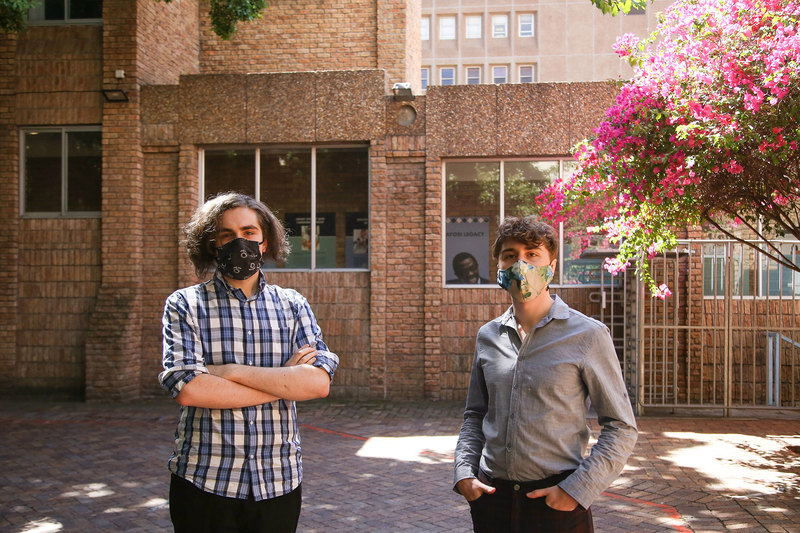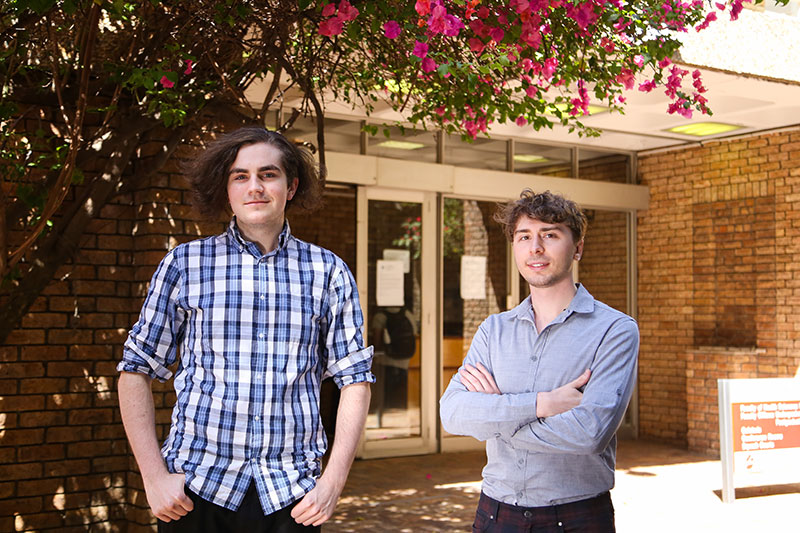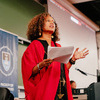Top marks for interdisciplinary and collaborative approach
31 March 2021 | Story Carla Bernardo. Photos Je’nine May. Read time 5 min.
What do you get when you combine the knowledge and work of a supervisor, two bright young students and a PhD candidate from another discipline? In Tobie Steyn and Tyler Kantor’s case, it’s earned them recognition from their department for one of the best papers in their year, and has provided new insight into epidemic modelling.
Steyn and Kantor are graduands at the University of Cape Town (UCT), and their thesis, “A Heterogeneous Compartment Model for the Dynamics of COVID-19 in South Africa”, has been recognised by the Department of Chemical Engineering as one of the best papers in their year.
Under the supervision of Professor Klaus Möller, the head of the Process Modelling and Optimisation group, Steyn and Kantor used data from PhD candidate Leen Remmelzwaal’s dashboard, Corona Stats (previously known as COVID-19 Stats SA).
Their paper explored the applicability of knowledge of chemical reactions, specifically batch reaction kinetics, to model COVID-19. Batch reaction kinetics are well documented in chemical engineering, and the approach has mathematical similarities to compartment modelling – an approach found in epidemiology. Compartment models attempt to simulate virus spread by segmenting the population into stages of infection or compartments such as “infected” or “recovered”.
To provide more accurate results, Steyn and Kantor subdivided these compartments into age groups, with the final model offering a quantitative analysis of COVID-19 in the Western Cape with realistic simulation time to allow for tuning of the model parameters.
New insight
The idea for the paper came from Professor Möller’s interest in and research on COVID-19. Wanting to know how South Africa fared against the rest of the world, Möller wrote code to plot approximately 20 countries every day, followed data from Johns Hopkins University, and was then introduced to Remmelzwaal’s dashboard. He used this to keep himself, friends and colleagues abreast of the evolution of the epidemic.
Given his knowledge of modelling chemical processes, Möller became interested in finding out more about epidemic modelling and began “playing around with some of the basic models, none of which worked really well”. This led to him proposing a final-year chemical engineering project around the idea of treating epidemic modelling in the same way one would model a sequence of reactors with many chemical species.
And then, as the proud supervisor put it, “along came Tobie and Tyler, and the rest is history”.

With Möller’s guidance and the in-depth data from Remmelzwaal’s dashboard, Steyn and Kantor approached epidemic modelling from a different viewpoint and provided new insight.
Möller explained that a unique feature of their model is that “it is able to distinguish the dynamics of the population fraction that never gets infected from the dynamics of the infected population, simultaneously”; other models only consider the dynamics of the fraction of the population that is infected.
“Much needs to be done before this model can be used for large-scale simulation and prediction, but the concepts explored here have been shown to be effective in epidemic modelling,” Möller continued.
Innovative ideas
Steyn and Kantor’s paper, and Möller’s supervision, were recognised by a departmental selection committee. According to Möller, the diversity and novelty of the project helped the paper stand out.
He applauded Steyn and Kantor for the “quality and thoroughness” of their work, noting that it had been one of the best projects he’d supervised in a long time.
“It’s important to study processes that impact our people; and as engineers, we do that through building mathematical models of the events in the hope that we would be better informed and prepared, and thus reduce the impact of these epidemics on the people,” said Möller.
Remmelzwaal, who made his data available throughout, said Corona Stats was proud to be associated with the research of Möller, Steyn and Kantor.
“It continues to be our pleasure to support academic projects such as this one by providing COVID-19 data via the website’s application programming interface (API) without any cost to the students and staff,” said Remmelzwaal.
He added that Corona Stats endeavours to continue offering a free version of the API licence to students so that they can use reliable and screened South African COVID-19 data to develop innovative ideas for modelling and predicting the spread of the virus.
 This work is licensed under a Creative Commons Attribution-NoDerivatives 4.0 International License.
This work is licensed under a Creative Commons Attribution-NoDerivatives 4.0 International License.
Please view the republishing articles page for more information.
Research & innovation





































